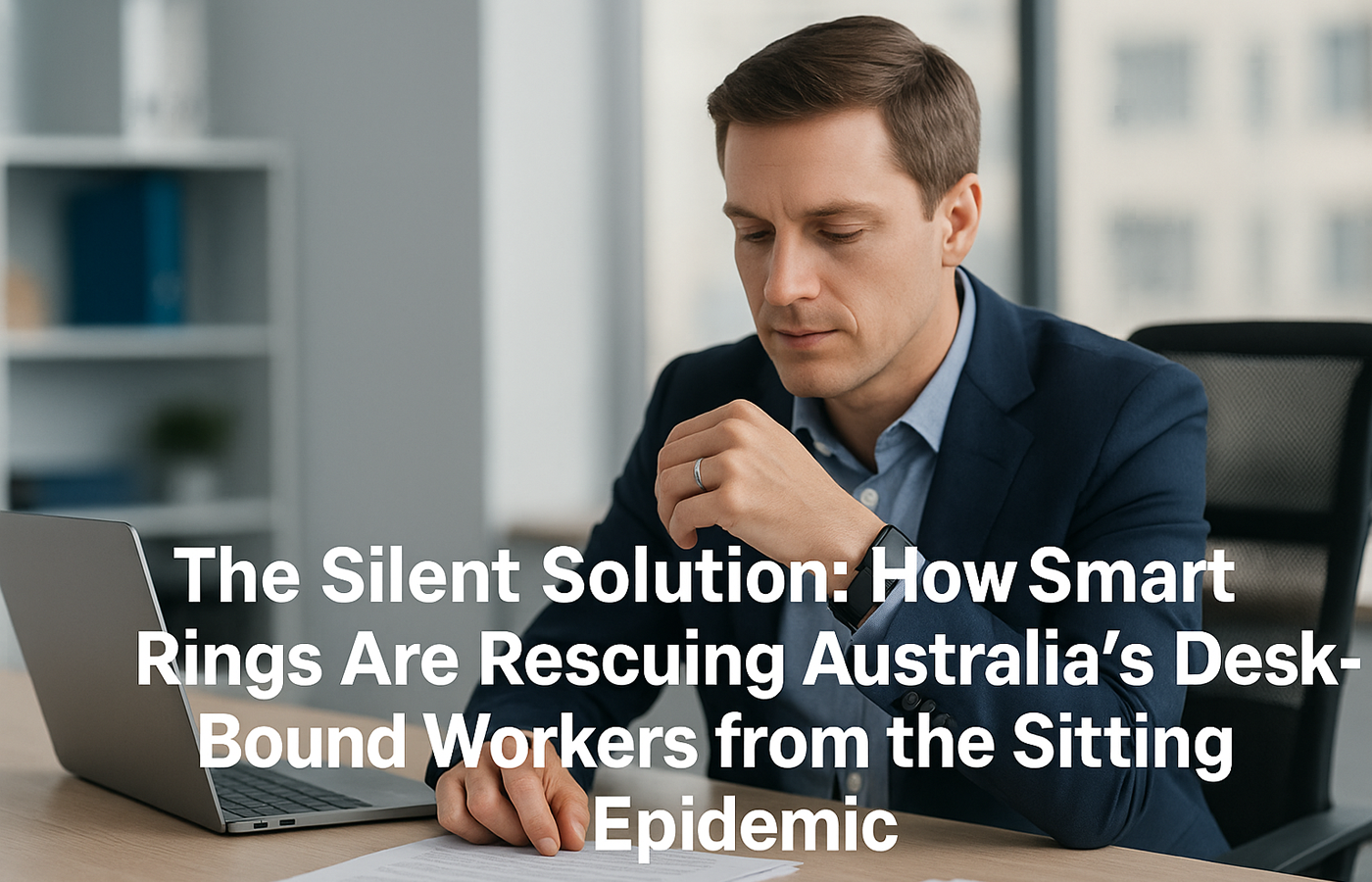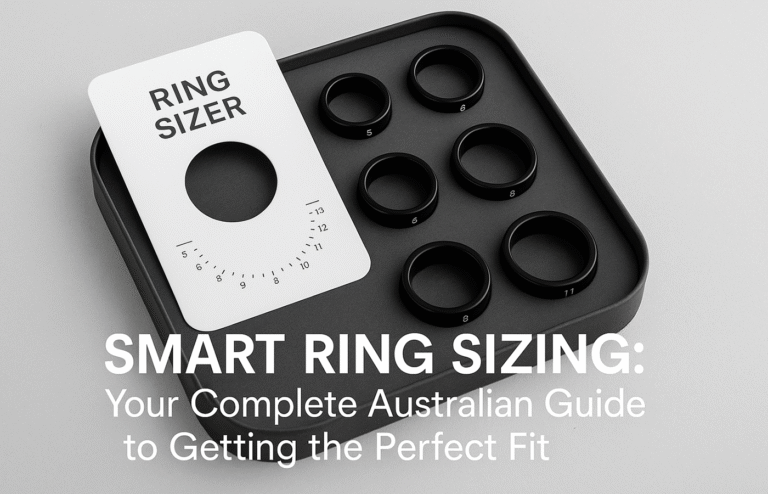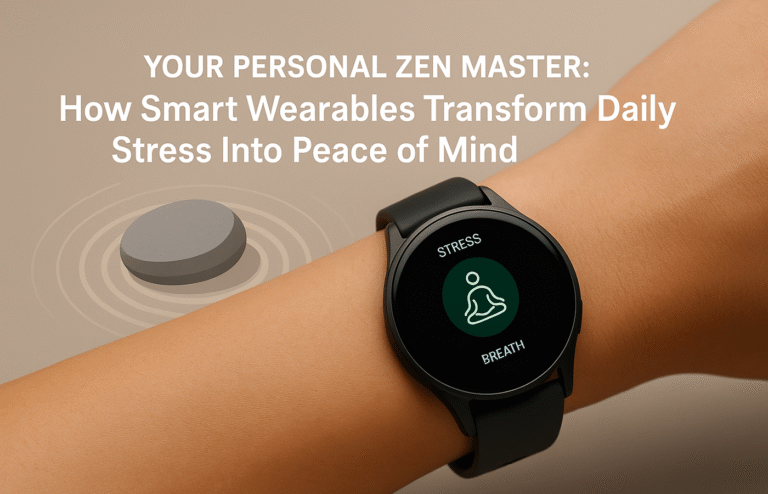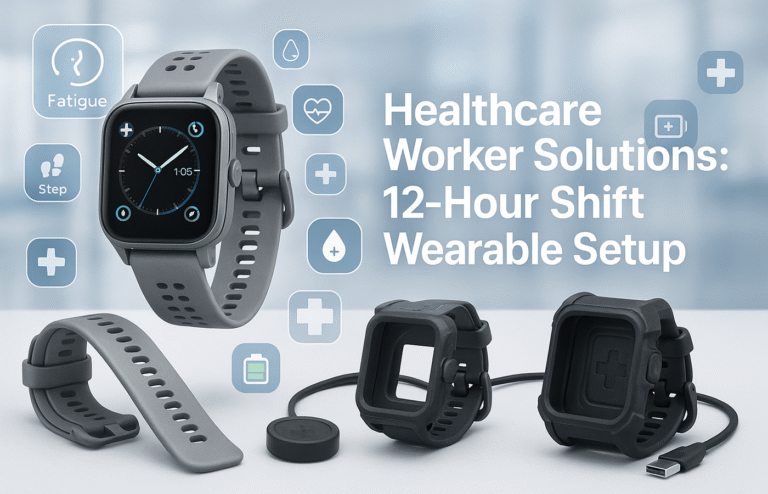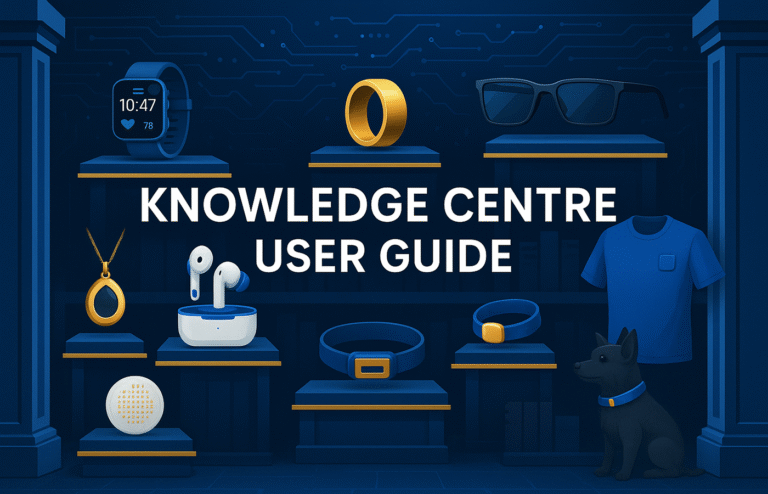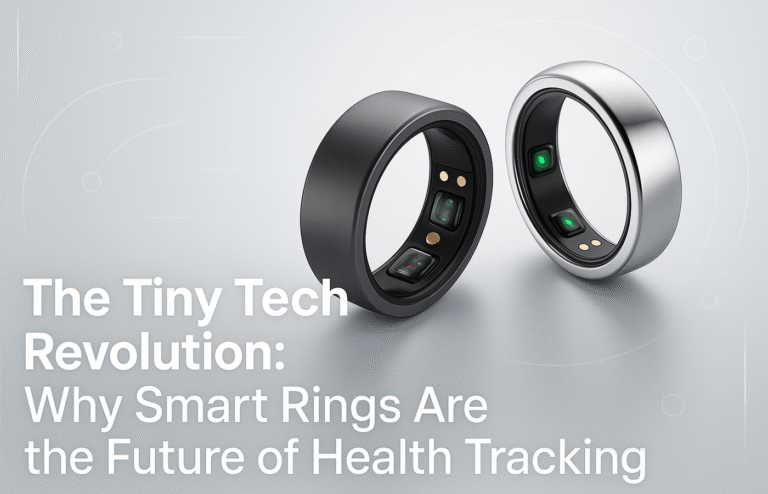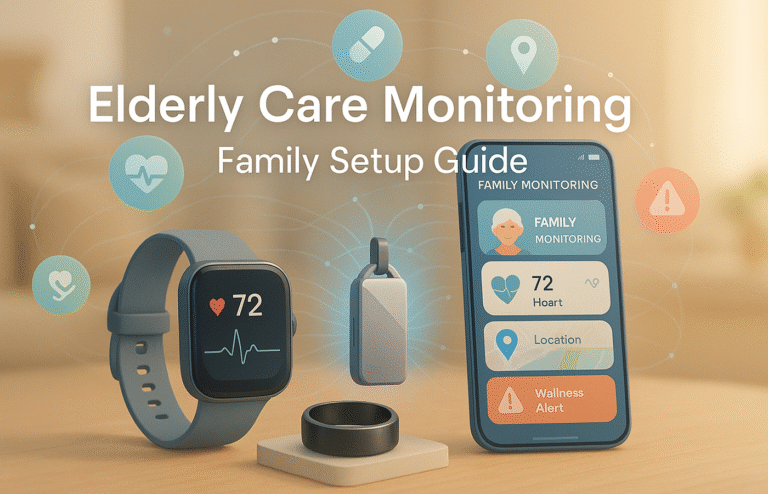The Silent Solution: How Smart Rings Are Rescuing Australia’s Desk-Bound Workers from the Sitting Epidemic
Over 60% of Australian workers spend more than six hours daily seated, creating “sitting disease” that increases early death risk by 40% and costs the economy $5.6 billion annually in musculoskeletal injuries. Smart rings provide discrete workplace wellness monitoring without disrupting professional workflows.
Leading Devices & Pricing:
● Samsung Galaxy Ring: $699 AUD (AI-powered inactivity detection)
● Oura Ring 4: From $549 AUD plus $8.99 monthly subscription (comprehensive wellness tracking)
● Ultrahuman Ring Air: From $449 AUD (metabolic health focus, no subscription)
Key Benefits:
● 43% reduction in back pain reported by Macquarie Bank employees
● 28% improvement in workplace energy levels
● Gentle haptic reminders that don’t disrupt meetings or concentration
● Learns individual work patterns to optimise intervention timing
Professional Advantages:
Discrete jewellery-like appearance maintains professional image whilst providing sophisticated health monitoring, perfect for client-facing roles and corporate environments.
The Silent Solution: How Smart Rings Are Rescuing Australia’s Desk-Bound Workers from the Sitting Epidemic
Australia’s transformation into a knowledge-based economy has inadvertently created one of the most significant public health challenges of our time. With over 60% of Australian workers now spending more than six hours daily chained to their desks, we’re witnessing the emergence of what medical professionals increasingly call “sitting disease”—a condition that silently undermines the health of millions whilst they focus on meeting deadlines and achieving productivity targets.
The modern office environment, whilst undeniably boosting economic output and enabling flexible work arrangements, has trapped Australian workers in prolonged sedentary cycles that our bodies simply weren’t designed to handle. From the towering corporate offices of Sydney’s CBD to the co-working spaces of Melbourne’s creative quarters, millions of Australians unknowingly engage in behaviour patterns that significantly increase their risk of cardiovascular disease, diabetes, chronic back pain, and even premature death.
However, a technological revolution is quietly unfolding on the fingers of forward-thinking Australian workers. Smart rings have emerged as the perfect solution to this workplace wellness challenge, offering discrete, continuous monitoring that detects prolonged inactivity and delivers gentle movement reminders without disrupting workflow or drawing unwanted attention from colleagues.
The Hidden Health Crisis in Australian Offices
The statistics surrounding Australia’s sedentary work epidemic are genuinely alarming. Research conducted by the Australian Institute of Health and Welfare reveals that the average Australian office worker sits for 10 hours per day, with some studies indicating that prolonged sitting increases the risk of early death by up to 40%, regardless of regular exercise habits outside work hours.
Dr. Sarah Mitchell, a workplace health specialist at Melbourne’s Monash University, explains the physiological impact: “When we sit for extended periods, our bodies essentially shut down metabolically. Blood flow decreases, insulin effectiveness drops, and our postural muscles begin to weaken and shorten. Most concerning is that these effects begin within just 30 minutes of continuous sitting.”
The economic implications prove equally staggering. Safe Work Australia estimates that musculoskeletal injuries—many directly related to prolonged sitting and poor workplace ergonomics—cost the Australian economy over $5.6 billion annually through lost productivity, medical treatments, and workers’ compensation claims.
Consider the typical day of Emma Rodriguez, a 34-year-old marketing manager in Brisbane. Arriving at her desk at 8:30 AM, she immediately becomes absorbed in emails, client presentations, and strategy meetings conducted via video conference. Before she realises it, lunch has passed, her shoulders ache, and she hasn’t moved from her chair for nearly five hours. This scenario repeats across millions of Australian workplaces daily.
The psychological dimension adds another layer of complexity. Many workers report feeling guilty about taking movement breaks during busy periods, perceiving them as unproductive time that could be better spent on urgent tasks. This mindset, whilst understandable in competitive work environments, perpetuates the very behaviours that undermine long-term health and, paradoxically, sustained productivity.
Why Traditional Workplace Wellness Solutions Fall Short
Conventional approaches to combating sedentary work habits—standing desks, fitness apps, ergonomic assessments, and scheduled movement breaks—often fail because they require active participation during the periods when workers are most focused and least likely to interrupt their workflow.
Standing desks, whilst beneficial when used correctly, require conscious effort to alternate between sitting and standing positions. Many workers initially embrace standing desks but gradually revert to prolonged sitting as work pressures intensify and the novelty wears off. Moreover, poorly implemented standing can create its own health issues, including lower back pain and varicose veins.
Smartphone apps designed to prompt movement breaks face fundamental engagement challenges. Users must remember to activate the app, keep their phone nearby, and respond to notifications that may be inappropriate during important meetings or client calls. The visual and auditory nature of smartphone alerts can be disruptive in professional environments where discrete behaviour is essential.
Corporate wellness programs, whilst well-intentioned, often struggle with participation rates and long-term engagement. Group exercise sessions, walking meetings, and wellness challenges may appeal to some employees but fail to address the fundamental issue: the need for continuous, personalised monitoring that intervenes precisely when movement breaks will be most beneficial without disrupting professional responsibilities.
Furthermore, traditional solutions rarely account for individual differences in work patterns, physical condition, and job requirements. A graphic designer working on tight deadlines faces different challenges than an accountant during tax season, yet most workplace wellness approaches apply one-size-fits-all recommendations.
The Smart Ring Revolution in Workplace Wellness
Smart rings represent a paradigm shift in workplace health monitoring by providing continuous, discrete tracking that seamlessly integrates with professional environments. Unlike bulky fitness trackers or attention-grabbing smartwatches, smart rings offer sophisticated health monitoring in a form factor that appears as elegant jewellery rather than obvious technology.
These devices excel in workplace settings because they operate entirely passively, requiring no conscious interaction during work hours whilst continuously monitoring movement patterns, heart rate variability, and other physiological markers that indicate when intervention is needed. The technology learns individual work patterns and delivers personalised recommendations through gentle vibrations that only the wearer notices.
Modern smart rings from leading manufacturers have evolved into comprehensive wellness platforms that understand the nuanced demands of knowledge work. They recognise the difference between productive focused work sessions that shouldn’t be interrupted and prolonged inactivity that genuinely threatens health. This contextual intelligence enables precisely timed interventions that support rather than hinder professional productivity.
The discrete nature of smart rings proves particularly valuable in professional environments where visible health tracking devices might be considered unprofessional or distracting. A subtle vibration reminder to take a brief walk or perform desk stretches maintains professional appearance whilst addressing critical health needs.
Advanced Features That Transform Workplace Health
Today’s leading smart rings offer workplace wellness capabilities that go far beyond simple activity reminders. The Samsung Galaxy Ring (RRP $699 AUD) provides sophisticated inactivity detection with personalised movement prompts based on individual work patterns and physiological responses. The device learns when you typically take breaks and optimises reminder timing to align with natural workflow patterns.
Samsung’s Galaxy AI analyses movement data alongside heart rate variability and stress indicators to determine optimal intervention timing. Rather than delivering generic hourly reminders, the ring recognises when you’re in deep focus states that shouldn’t be interrupted and when prolonged sitting is genuinely impacting your physiological wellbeing.
The Oura Ring 4 (RRP from $549 AUD, plus $8.99 monthly subscription) takes a comprehensive approach to workplace wellness by correlating movement patterns with sleep quality, stress levels, and recovery metrics. This holistic view helps users understand how workplace sitting habits affect overall wellbeing and provides personalised recommendations for optimising both professional performance and health outcomes.
Ultrahuman Ring Air (RRP from $449 AUD) focuses specifically on metabolic health, providing insights into how prolonged sitting affects blood glucose levels and metabolic function throughout the workday. This data proves particularly valuable for workers concerned about diabetes risk or those seeking to optimise energy levels during demanding work periods.
These devices provide gentle haptic feedback through subtle vibrations that alert you to movement needs without disrupting concentration or drawing attention from colleagues. Visual data displays through smartphone apps offer detailed insights into daily movement patterns, sitting duration, and the effectiveness of intervention strategies, enabling continuous optimisation of workplace wellness approaches.
Real-World Success Stories from Australian Workplaces
The practical benefits of smart ring workplace wellness monitoring are becoming evident across diverse Australian industries. Macquarie Bank implemented a pilot program providing Samsung Galaxy Rings to 200 employees across their Sydney headquarters, resulting in a 43% reduction in reported back pain and a 28% improvement in self-reported energy levels during work hours.
“The results exceeded our expectations,” explains Lisa Thompson, Macquarie’s Head of Employee Wellness. “Employees appreciated the discrete nature of the technology and reported feeling more energised throughout the day. Most importantly, we saw no decrease in productivity—in fact, teams reported feeling more focused during work sessions after implementing regular movement breaks.”
Technology consulting firm Deloitte Australia conducted a comprehensive study across their Melbourne and Perth offices, providing Oura Rings to 150 consultants known for working long hours under intense deadlines. The six-month trial revealed remarkable improvements in both health metrics and work performance.
Michael Chen, a senior consultant who participated in the study, describes his experience: “I was sceptical initially, but the ring helped me recognise how much my afternoon energy crashes were related to prolonged sitting. The gentle reminders prompted brief walks that actually improved my focus rather than disrupting it. My client presentations improved because I felt more alert and physically comfortable.”
Small businesses are also embracing smart ring technology. Melbourne-based architecture firm Hassell Architecture provided Ultrahuman Rings to their design team, recognising that creative professionals often become absorbed in projects for hours without moving. The results included improved creativity metrics and reduced complaints about physical discomfort during long design sessions.
Integration with Australian Workplace Culture and Regulations
Smart rings align perfectly with Australian workplace health and safety regulations whilst respecting the cultural nuances of professional environments across different industries. Safe Work Australia’s guidelines emphasise the importance of regular movement and posture variation, and smart rings provide an elegant technological solution that supports compliance without creating administrative burden.
The discrete nature of smart rings proves particularly valuable in client-facing roles where visible health tracking devices might be considered unprofessional. Legal professionals, financial advisors, and consultants can maintain polished appearances whilst benefiting from sophisticated health monitoring that supports sustained performance during long meetings and intensive work sessions.
Australian workplace culture increasingly values work-life balance and employee wellbeing, making smart rings an appealing option for organisations seeking to demonstrate genuine commitment to staff health without implementing intrusive monitoring systems. The personal nature of smart ring data ensures privacy whilst providing valuable insights that benefit both individual workers and organisational wellness programs.
Remote work arrangements, which became widespread following the COVID-19 pandemic, present unique challenges for workplace wellness monitoring. Smart rings excel in remote environments by providing consistent health tracking regardless of location, helping distributed teams maintain healthy work habits whether working from home offices, co-working spaces, or client sites.
Setting Up Your Workplace Wellness Smart Ring System
Implementing smart ring workplace wellness monitoring requires minimal setup but delivers maximum impact through intelligent automation tailored to professional environments. The initial configuration involves establishing work schedule patterns, setting movement reminder preferences, and allowing the device to learn your unique productivity rhythms over several weeks.
Most smart rings can be configured with “do not disturb” periods during critical meetings or deadlines, ensuring that wellness reminders never interfere with important professional obligations. Advanced users can integrate their smart ring data with calendar applications to automatically adjust reminder timing based on meeting schedules and project deadlines.
The system becomes increasingly sophisticated as it accumulates data about your work patterns, stress responses, and movement preferences. If you typically experience afternoon energy dips, the ring will proactively suggest movement breaks before fatigue sets in. If you prefer brief walks over desk stretches, the device learns these preferences and adjusts recommendations accordingly.
Integration with workplace wellness programs enhances the benefits for both individuals and organisations. Anonymous aggregated data can inform broader workplace health initiatives whilst maintaining individual privacy, creating evidence-based approaches to office design, break scheduling, and employee wellness policies.
Choosing the Right Smart Ring for Your Workplace Needs
Selecting the optimal smart ring for workplace wellness depends on your specific professional environment, personal preferences, and integration requirements. Consider factors like battery life (important for busy professionals who might forget charging routines), water resistance (for hand washing and unexpected weather), and smartphone compatibility with existing devices.
The Samsung Galaxy Ring offers the most comprehensive workplace wellness features with excellent battery life and seamless Android integration. Its sophisticated AI-powered insights prove particularly valuable for professionals seeking to optimise both health and performance outcomes. The one-time purchase price makes it cost-effective for long-term use.
The Oura Ring 4 provides the most detailed health insights with superior sleep tracking that helps users understand how workplace stress affects recovery. However, the ongoing subscription fee may be a consideration for budget-conscious professionals. The comprehensive app ecosystem makes it ideal for data-driven individuals.
Ultrahuman Ring Air appeals to professionals focused specifically on metabolic health and energy optimisation. Its subscription-free model and focus on glucose response monitoring make it particularly suitable for executives and consultants who need sustained energy throughout demanding workdays.
Consider your primary workplace challenges when selecting features. Professionals in high-stress environments might prioritise stress monitoring and heart rate variability tracking, whilst those spending long hours at desks might focus on movement reminders and posture-related features.
Advanced Workplace Optimisation Strategies
Smart rings enable sophisticated workplace wellness strategies that go beyond simple movement reminders. The devices can correlate productivity patterns with movement habits, helping professionals identify optimal work-break rhythms that maximise both health and performance outcomes.
Energy management becomes particularly sophisticated with smart ring data. Users can identify how different types of movement breaks affect afternoon productivity, discovering whether brief walks, stretching routines, or breathing exercises provide the most effective energy restoration for their individual physiology.
Stress pattern recognition helps professionals understand how workplace pressures manifest physically, enabling proactive stress management before symptoms become overwhelming. This insight proves particularly valuable during high-pressure periods like quarterly reporting, project deadlines, or client presentations.
Meeting optimisation represents an emerging application where smart ring data informs meeting scheduling and duration decisions. Understanding how prolonged sitting affects your cognitive performance enables more strategic meeting planning that balances collaboration needs with health requirements.
The Future of Workplace Wellness Technology
The evolution of smart ring workplace wellness continues rapidly, with exciting developments that will further revolutionise how Australian professionals maintain health whilst pursuing career objectives. Advanced sensors may soon detect posture changes and muscle tension, providing real-time feedback about ergonomic positioning and movement quality.
Artificial intelligence integration promises even more sophisticated workplace wellness coaching based on individual productivity patterns and health responses. Future rings might predict optimal break timing based on your chronobiology, workload intensity, and physiological stress indicators.
Integration with workplace management systems could create comprehensive wellness ecosystems where environmental factors like lighting, temperature, and desk height automatically adjust based on individual smart ring data, optimising both comfort and productivity throughout the workday.
Taking Control of Your Workplace Wellness Journey
Smart ring workplace wellness monitoring represents more than technological advancement—it’s about reclaiming control over your health whilst maintaining professional excellence in Australia’s increasingly demanding work environment. For professionals facing the challenge of balancing career success with long-term wellbeing, these devices offer unprecedented support in creating sustainable work habits.
The combination of discrete monitoring, personalised recommendations, and seamless integration creates a wellness safety net that prevents health issues rather than merely responding to them after problems develop. As Sydney-based management consultant David Park discovered after adopting a Samsung Galaxy Ring, “I realised how much my work performance was actually suffering from poor sitting habits. The ring helped me establish sustainable movement patterns that improved both my health and my client presentations.”
With Australian workplaces becoming increasingly sedentary and competitive pressures continuing to intensify, there’s never been a better time to leverage smart ring technology for workplace wellness. The investment in a quality smart ring often pays for itself through improved energy levels, reduced health issues, and enhanced professional performance that comes from feeling physically comfortable and mentally sharp throughout demanding workdays.
The evidence is clear: smart rings work for workplace wellness. Whether you’re battling the demands of a corporate office in Melbourne’s financial district or managing clients from a home office in Perth’s suburbs, these discrete devices provide the intelligent, professional support needed to maintain optimal health whilst pursuing career success in Australia’s modern economy.

